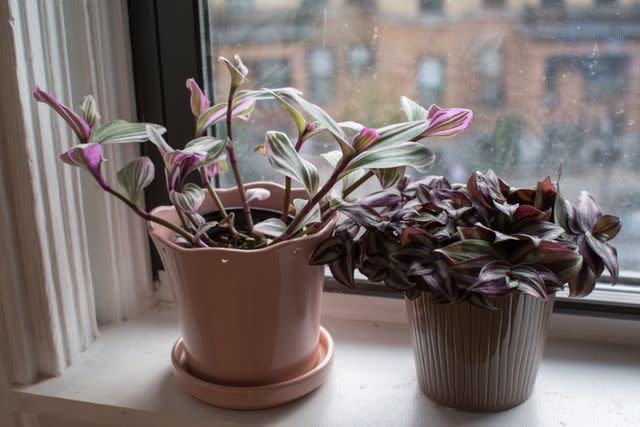These Are The Best Plants To Overwinter, According To An Expert
Here’s what garden and patio plants you can save for next spring.
As the temperatures start to drop and sweater weather arrives, you may start to look sadly at your beautiful, lush garden plants. Like it or not, their days are numbered! When the first frost arrives, tropical plants are done for the season, and you’ll have to buy many of them again next spring.
But not so fast! “You can overwinter many types of plants so that they will survive until next spring,” says Justin Hancock, horticulturalist with Costa Farms. “Some types can be kept in low light conditions, such as a garage or basement, while others can be enjoyed inside your home as a houseplant for the winter.”
Meet the Expert
Justin Hancock is a horticulturalist at Costa Farms.
When Should You Bring Outdoor Plants Indoors?
When nighttime temperatures begin dropping below 50 degrees, it’s time to bring in any plants you want to save. The first step is finding a spot for all of them. “Light is the most limiting factor. Going from outdoors in bright light to indoors is stressful on plants, ” says Hancock.
A south, west, or east-facing window is best for most plants. But grow lights or even simple LED strip lights are great options, too, if you don’t have a ton of windows. Also, avoid placing any plant in front of drafty windows or heating vents, says Hancock.
Finally, inspect every plant for pests before bringing them indoors. Outdoors, pests are kept in check by natural parasites and predators. A spray off from the hose can help dislodge hitchhikers. Some gardeners also use neem oil or insecticidal soap as a preventive before bringing plants inside, just in case any pests are hiding, says Hancock.

Getty Images
What Are The Best Plants To Overwinter?
Hancock says you can experiment with almost any plant, but be prepared for some trial-and-error. Also, your plants may act a little cranky at first. Many plants drop lots of leaves when they come inside due to lower light levels. You can try to help ease their transition by placing plants in the shade for about a week or two before bringing them indoors, says Hancock.
Incidentally, next spring, wait until nighttime temperatures are in the 50s before bringing them back outside. In addition, expose your plants gradually to more and more bright light over the period of a few weeks before placing them in full sun.
Here’s what plants typically overwinter well so that you can enjoy them again next spring:
Houseplants:
Houseplants that enjoyed a summer vacation outdoors can be brought in again, as well as houseplants you purchased as part of an outdoor mixed container, such as:
Garden and Patio Plants:
Some garden and container plants adapt surprisingly well indoors. Those include:
Coleus
Mandevilla, which can adapt to low light levels, especially if you give it a hard pruning, cutting it back by about ¼ before bringing indoors
Tropical hibiscus, which also benefits from a hard pruning. If you’re hoping for blooms, place in a high light location or use a grow light
Geraniums, which can be kept in a container or stored as a bare root plant in a cool, dark place
Citrus tree, which requires high light so a grow light is helpful
Bird of paradise, which can adapt to low light
Deciduous Shrubs and Small Trees:
Some patio plants or trees that drop their leaves can be brought indoors for the winter. Place them in an area such as a unheated basement or garage. Surprisingly, an attached garage can provide an additional 20 degrees or so of warmth, while a detached garage will provide about 10 more degrees of warmth, says Hancock.
These plants should be kept barely moist, not soggy, and they don’t need a grow light. These include:
Banana tree
Japanese maple that are marginally hardy to your zone
Dormant Bulbs
Some bulbs will not survive a freeze. After a frost, store these in their pots, keeping the soil barely moist. Or trim off the stems, dig up the bulbs, and wrap in peat moss, storing at temperatures around 40 to 50 degrees. These include:
Ginger
Calla
Are There Some Plants You Shouldn’t Overwinter?
While there’s no harm in experimenting with any plant you’d like to save (except annuals such as petunias or marigolds, which have a one-year life cycle and aren’t likely to survive anyhow), some are tougher than others to get through the winter, says Hancock. Those include:
Lavender, which is vulnerable to downy mildew indoors
Gardenia, which prefers high humidity levels that aren’t common in our homes in winter
Boston fern, which drops fronds constantly indoors if humidity levels are low
Many types of herbs, which need high light
For more Southern Living news, make sure to sign up for our newsletter!
Read the original article on Southern Living.

